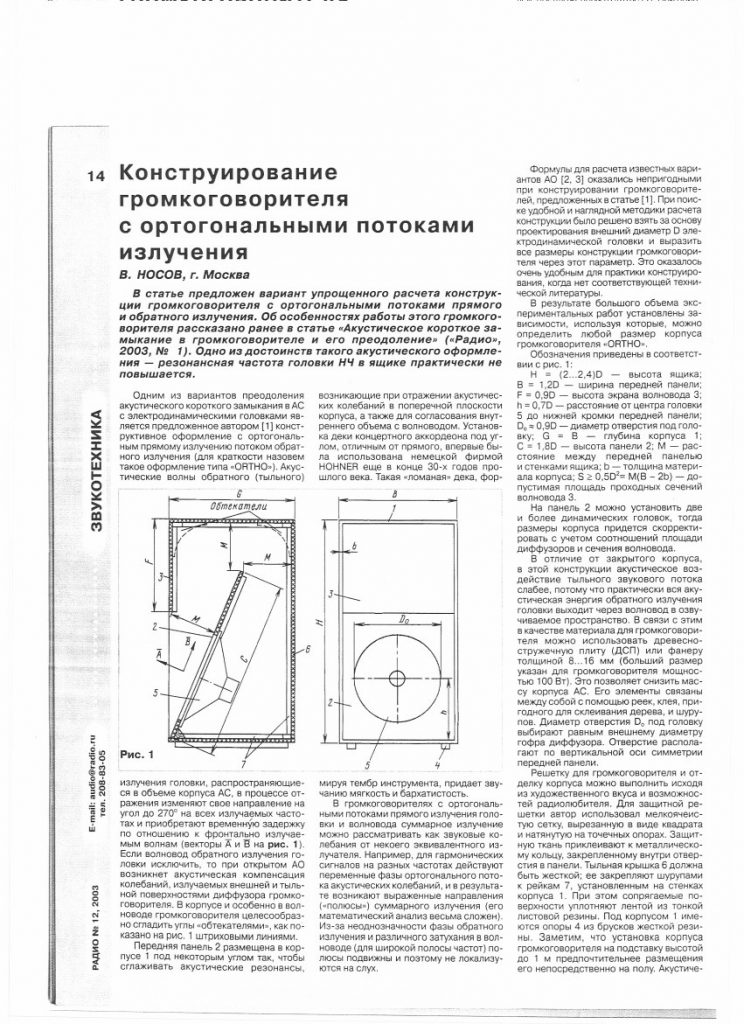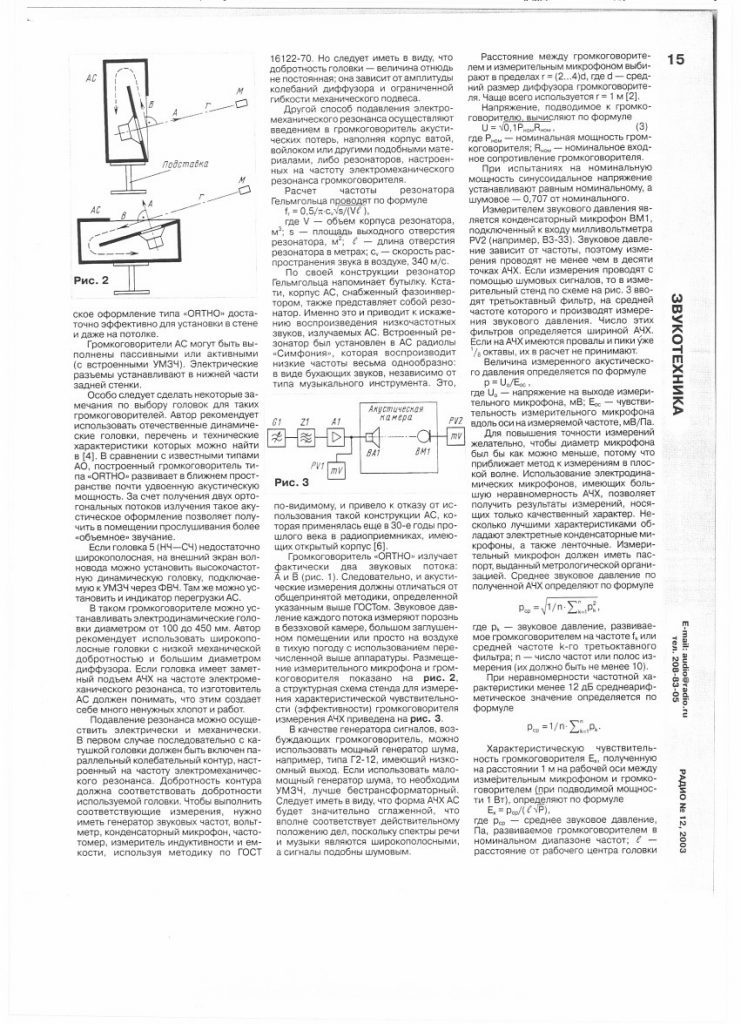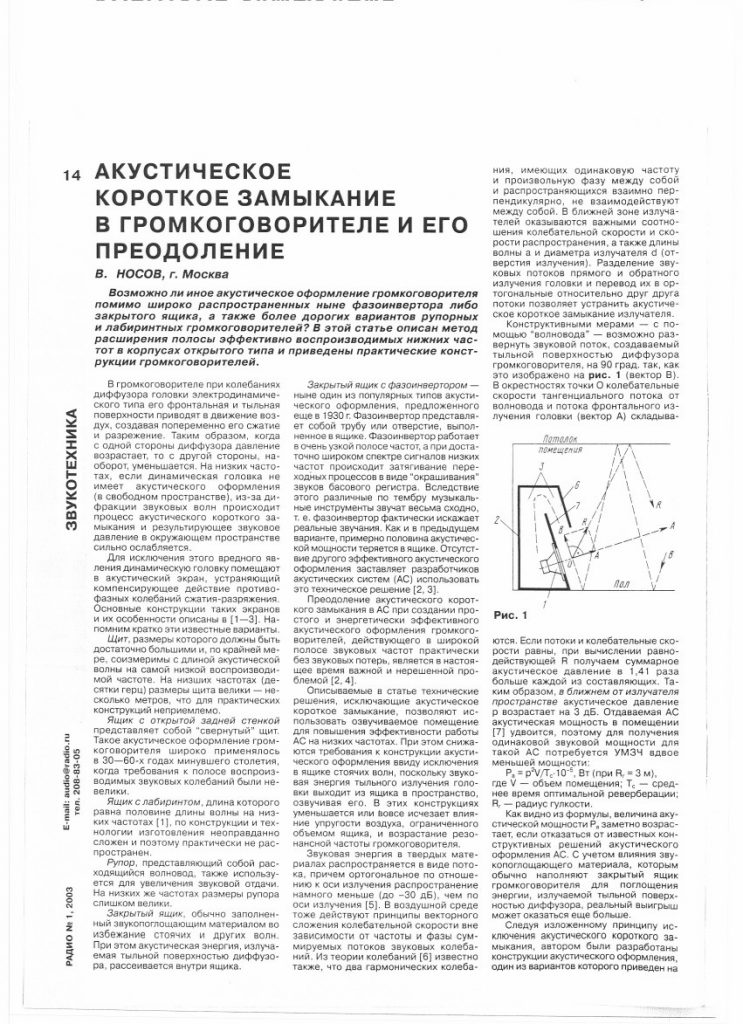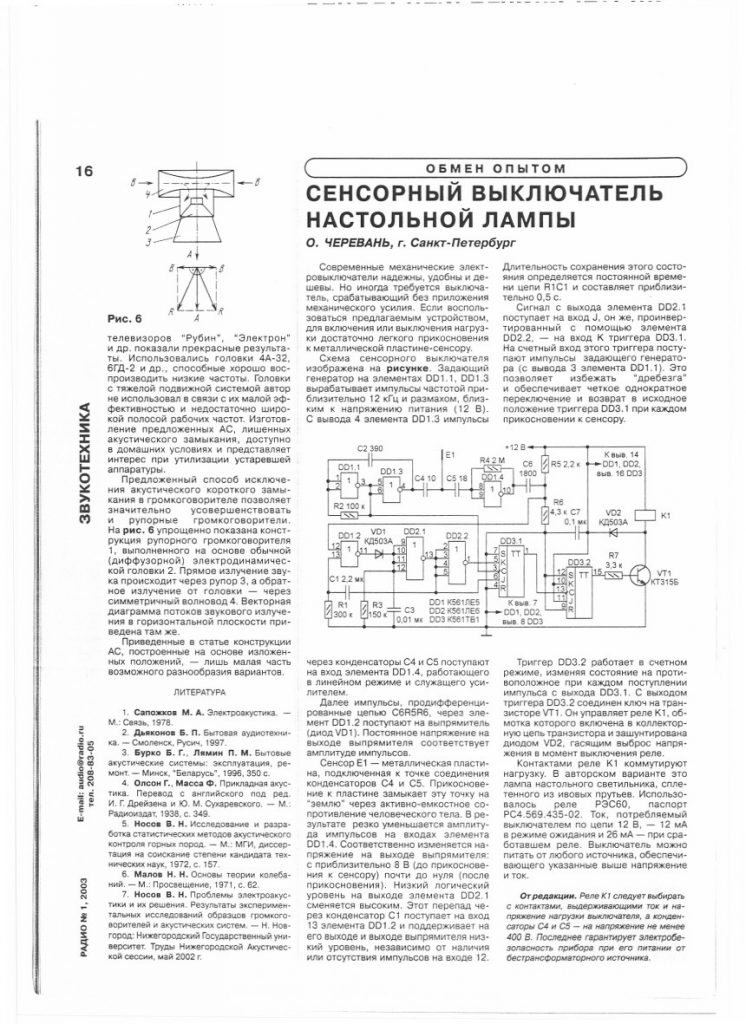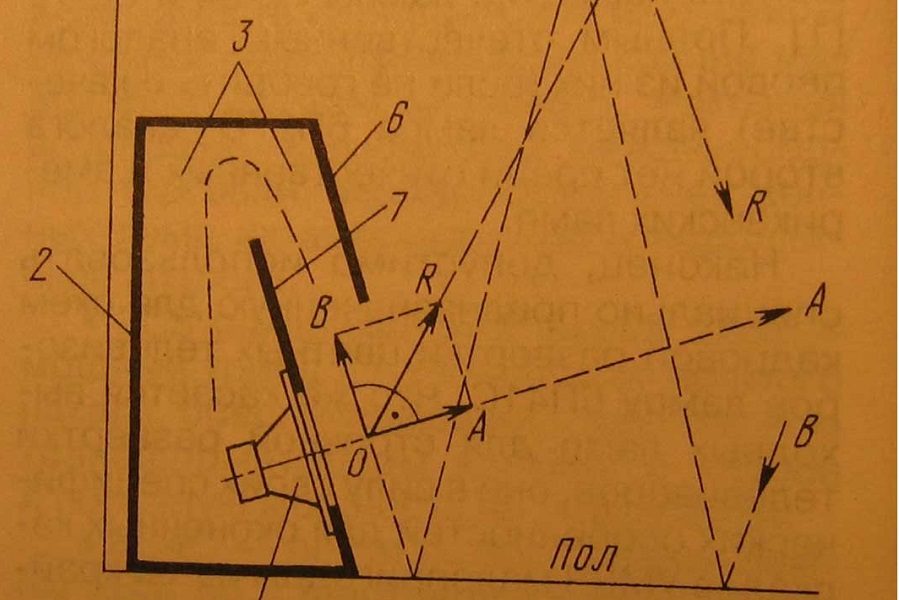It was Toomas Lavits from Elite Audio, Tallinn, who brought to my attention this intriguing speaker design. It is based on an article a rather famous audio expert Mr. V. Nosov published in the Russian audio-magazine called “Radio” in 2003.
Toomas had himself tried the concept with his full-range driver PHY HP 21 LB15 (no tweeter). PHY’s units are excellent drivers in many respects but not the easiest ones to harness (the Q value speaks in favour of an open back cabinet). Since Toomas’ listening space at that time was only 18m2, the compact Nosov design seemed worth trying, and he hasn’t regretted it.
On the other hand, another hobbyist tried the concept with the original 12 inch driver, and wasn’t entirely happy, especially about how the lower frequencies were reproduced.
Nosov’s design is called “orthogonal” because (so it seems) the rear radiation of the driver is coming out from the box exactly in the 90 degree angle in relation to the forward radiating direct sound. But it may be something else too. At any rate, it doesn’t seem like an ordinary transmission liner. Unfortunately, the original articles are in Russia, ie. beyond my linguistic abilities.
The diagram of the box is the following. Crucial for the design is that all dimensions are relative to the size of the driver:
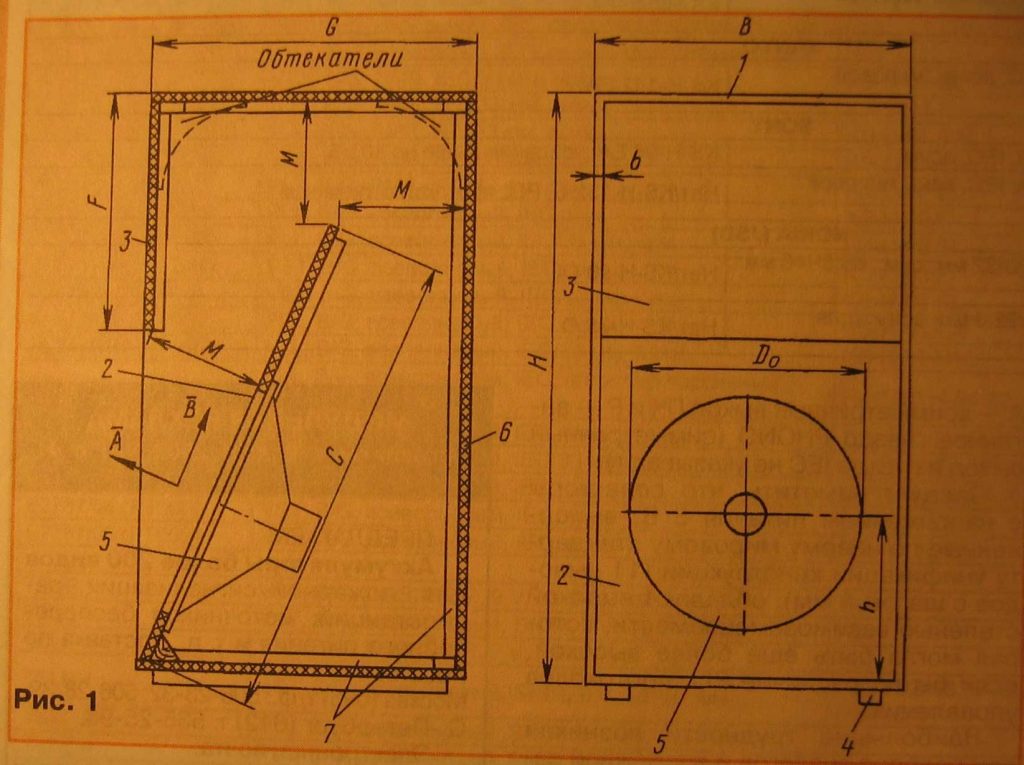
H = (2…2,4) D hight of the box
B = 1,2 D width of the box
F = 0,9D hight of the waveguide (3)
h = 0,7D distance from the centre of the driver (5) to the front edge of the bottom
Do = circa 0,9D diameter of the montage hole of the driver (5)
G = B depth of the box (1)
C = 1,8D hight of the driver baffle (2)
M distance between the baffle (2) and the top panel
b thickness of the material (eg. 8 – 21 mm ply)
S >= 0,5 D² = M (B-2b) the two areas must be equal
The corner inside the box, just beneath the driver, is made round with some wood material. Some damping material (wool or cotton) can be added to the corner behind the driver.
All the pieces of the box are to be fixed with glue and wood strips (7). As Toomas pointed out, the construction must be very rigid, and especially important is the stability of the baffle and the back wall. The whole cab needs to be like a monolith.
Toomas compared his PHY-Nosov (17mm birch ply) with two other PHY cabinets: a small open back box, and the PHY-HP Minikit 21. Of these three, the Nosov was (still is) his favourite design mainly on the grounds that there were more micro dynamics, localization of the sound sources was very satisfactory, and the midrange was really blooming.
The only weakness Toomas picks up is the level of the bass that could be a tad higher. This is in a way understandable because the dimensions (linked to the size of the driver) of the cab, including the length of the (transmission) line, are not that great.
That is why the speaker appears to be designed to be placed on the floor or a surface. The proximity of the floor guarantees that bass frequencies get amplified in comparison to the situation where the speaker would have been placed on a stand or something. In the second article, other models are placed on a stand as well.
Another advantage of this design, according to Toomas, is how naturally the sound mingles with the room.
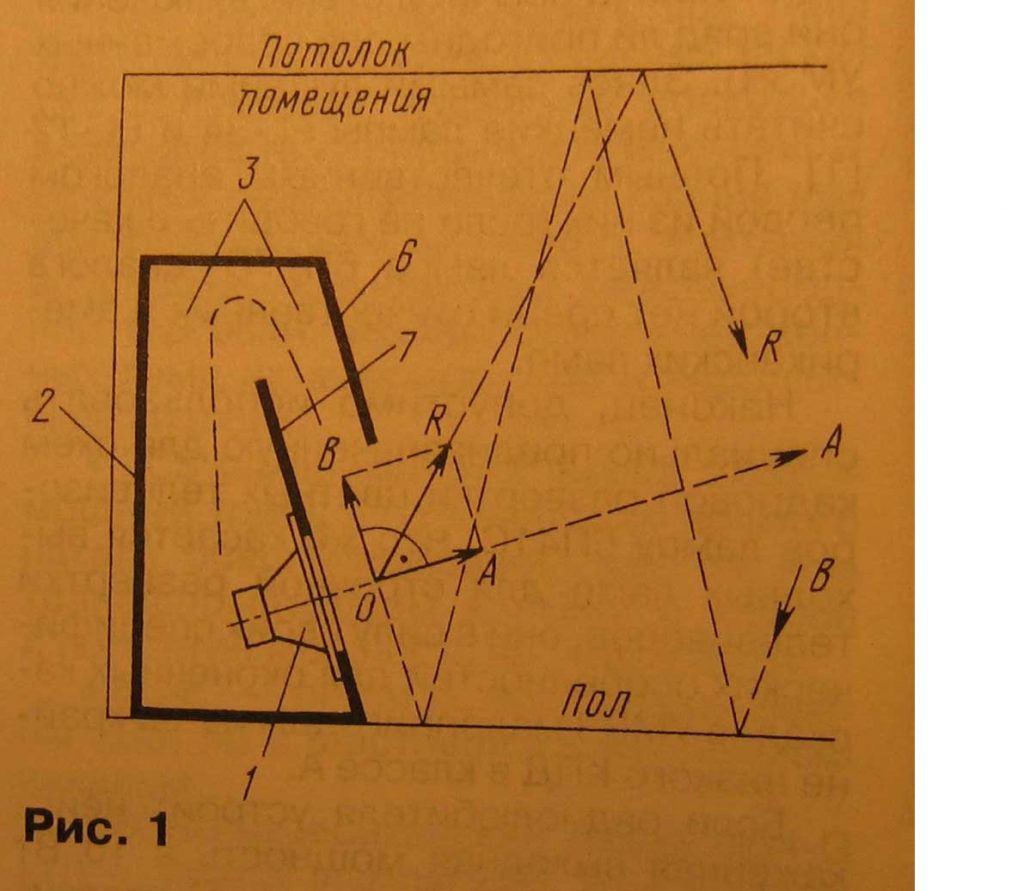
Here are the two Nosov articles:
